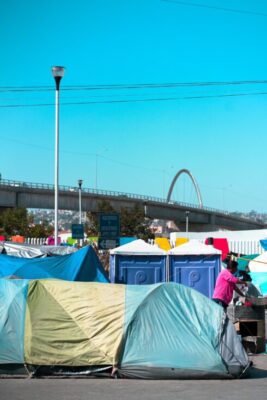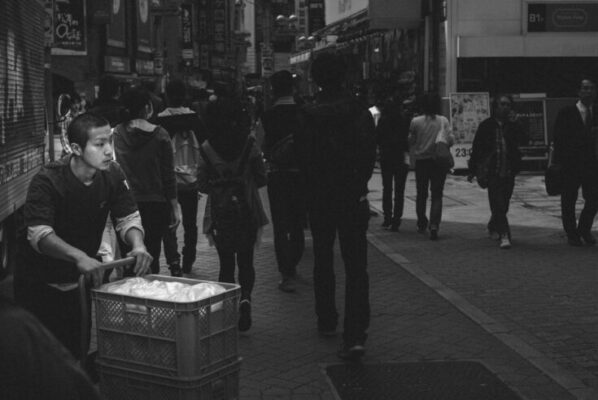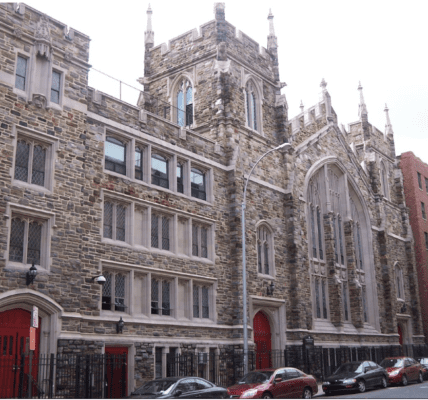Busload of Migrants Bound for NYC Dropped at N.J. Station as the City Strives to Manage the Crisis
Understanding the Dynamics and Collaborative Solutions Amidst the Migrant Crisis in NYC and N.J.
New York City is currently grappling with a surging influx of migrants, triggering a response from Mayor Eric Adams, who recently issued an executive order to regulate the entry of asylum seekers. However, reports suggest that some buses carrying migrants are circumventing these restrictions by making unscheduled stops at rail stations in New Jersey. The mayor of Secaucus alleges that this diversion is an attempt to evade the measures implemented by Mayor Adams.
 Read More News:
Read More News:
- The Democratic Challenge to Trump’s NY Primary Ballot Eligibility
- Illinois Pioneers Worker Rights with the ‘Paid Leave for All Workers Act’
- Rising Tide: Non-Detained Illegal Immigrants and Deportations Surge Amidst Border Crisis, Reveals ICE Report
In a statement released on Wednesday, Mayor Adams highlighted the severity of the humanitarian crisis, revealing that a staggering 14,700 asylum seekers had crossed the southern border in the past month alone, arriving in New York City via buses. The irregular appearance of these buses at unconventional locations in Midtown Manhattan, particularly on weekends and during nighttime hours, has heightened concerns about the city’s capacity to manage the influx effectively.
Mayor Adams justified his executive order as a crucial step toward ensuring the safety and well-being of the migrants. The order mandates bus operators to provide the city with a minimum of 32 hours’ notice before dropping off migrants and restricts drop-offs to a specified timeframe between 8:30 a.m. and 12 p.m. on weekdays. The aim is to streamline the entry process, enhance logistical planning, and maintain order during a challenging time for the city.
The situation took a turn when ten buses originating from Texas and Louisiana reached NJ Transit train stations in various New Jersey communities, including Secaucus, Fanwood, Edison, and Trenton. According to a statement from the Jersey City X account on Sunday, these buses transported a total of 397 migrants. The unexpected drop-offs in New Jersey underscore the complexities of managing the crisis, with implications reaching beyond the borders of New York City.
Despite attempts to seek clarification from Mayor Adams’ press office, there was no immediate response to inquiries made on Sunday night. Governor Phil Murphy’s spokesperson, however, shed light on the migrants’ use of New Jersey as a transit hub, emphasizing that the majority eventually proceeded to New York City. This dynamic has led to increased coordination challenges between the neighboring states in handling the surge in migrant arrivals.
Governor Murphy’s spokesperson, Jones, disclosed that New Jersey has become a transit point for migrant families on their journey to New York City. This revelation adds a layer of complexity to the crisis, as it requires collaborative efforts between the two states to ensure a cohesive response and effective management of the situation.
Since the onset of the migrant crisis, New York City has opened more than 210 emergency locations to provide shelter for those seeking refuge. Mayor Adams has also identified eighteen additional substantial humanitarian relief centers. Acknowledging the magnitude of the challenge, he has called upon federal authorities for assistance, underscoring the need for a collective and coordinated effort to address the multifaceted issues arising from the surge in migrant arrivals.
In conclusion, the ongoing migrant crisis in New York City has prompted Mayor Adams to implement measures aimed at regulating the entry of asylum seekers. However, the diversion of buses to New Jersey rail stations poses a significant challenge to the effective enforcement of these measures. As the situation unfolds, collaboration between neighboring states, along with support from federal authorities, becomes increasingly crucial to managing the crisis and ensuring the well-being of the migrants arriving in the city.




